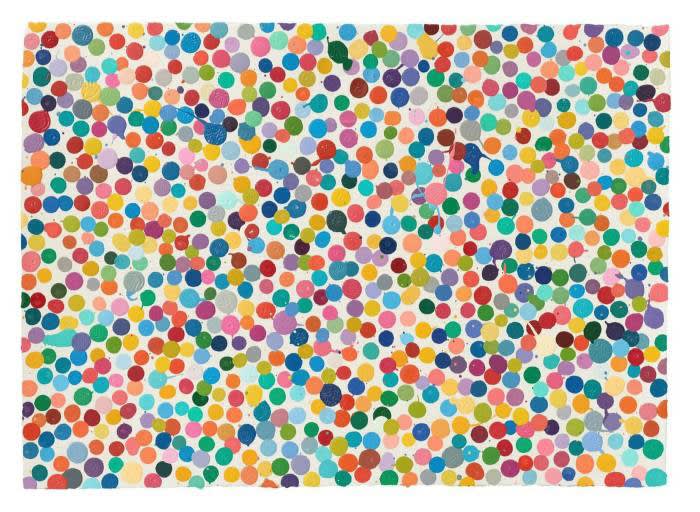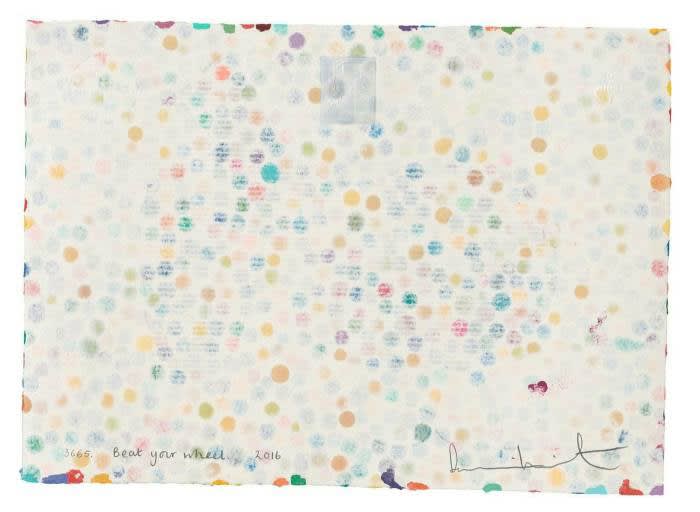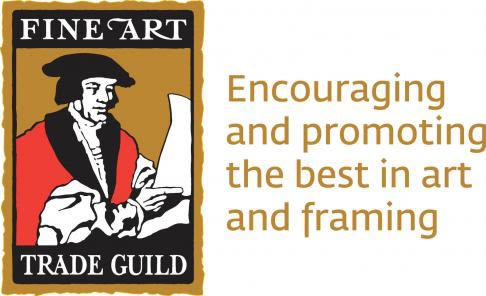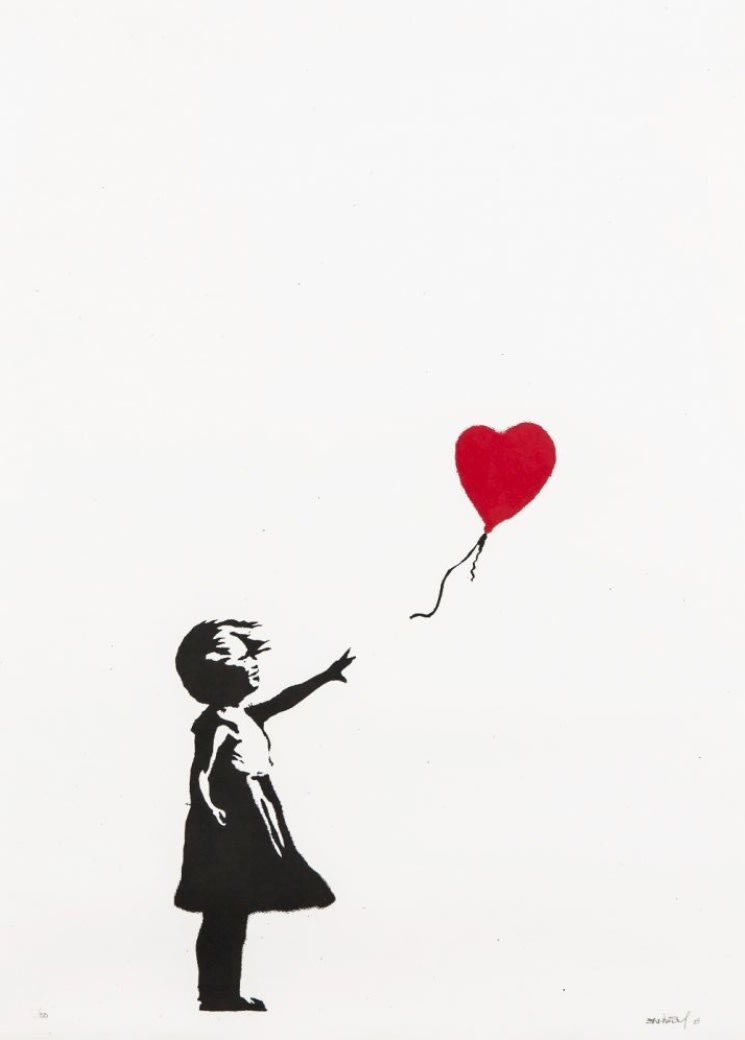Trust Damien Hirst to put a spin on things. In today’s launch of his NFT-based project, entitled “The Currency”, the British artist has devised an ingenious system that calls into question notions of worth and value — and, importantly, makes his buyers declare their colours by presenting them with a choice. He has created 10,000 unique but almost identical spot paintings, each on an A4 sheet of special paper. The paper is not only signed and numbered in the usual way of multiples, but treated and watermarked, with an embedded hologram and other devices that make each sheet very difficult to copy or forge. Just like a banknote, in fact. Their nickname in the studio is “tenner”. Each of the physical works corresponds to a non-fungible token, which can be bought, on application, for rather more than a tenner — $2,000 apiece. The NFTs are immediately tradeable, in the usual way. But here’s the special Hirst-devised twist: two months after issue, owners of the NFTs have a choice. You will have to make a decision on whether to keep the NFT or the physical artwork: you can’t keep both. If you decide on the NFT, or fail to make a choice, the corresponding piece of art will be destroyed. If it’s the physical work you choose, the NFT will be deleted from the blockchain. At the end of a few months, therefore, “The Currency” could consist of either 10,000 NFTs in existence, or 10,000 paintings — or, most likely, a mixture of both. What the percentage of that mixture will be is anyone’s guess, and it’s that which will prove so interesting to market-watchers. It’s a system with multiple challenges. The most obvious one is the challenge to the buyer, especially buyers with investment in mind — will it be the NFT that appreciates most, or the original piece of artwork signed by Hirst? Which will you prefer to own? And how will you take the gamble and make the choice?
As Hirst says in a video interview with former Bank of England governor Mark Carney: “Yes, I’m forcing people to make a choice. But the purchaser always has a choice. It’s not just ‘Where’s the value?’ It’s also ‘Where’s the joy?’” He can’t help hoping, he says, that the majority of people will opt for the artwork. But then admits that it would be “exciting” if they didn’t. “It’s an experiment,” he says. There’s a challenge, too, to the art market as it goes through the mini-revolution brought on by NFTs. If art has traditionally been considered a store of value first and foremost, and a tradeable commodity second, this hybrid scheme blurs the lines: in Hirst’s view, the physical artworks themselves as much as the NFTs can act as a medium of exchange, as “currency”.

Hirst has created 10,000 unique but almost identical spot paintings © Prudence Cuming Associates Ltd © Damien Hirst and Science Ltd, DACS 2021
Interestingly, it’s a project Hirst was developing even before the advent of the NFT craze. He was eager about the potential of using multiple quasi-identical artworks to explore notions of worth and value, and of trust and belief. And fascinated by the ways in which art becomes transactional, too: contemplating the “Mona Lisa”, he says, he found himself “as interested in the postcards as I was in the real thing”. “Art as currency,” Hirst continues, “a lot of people have a problem with that.” It not only flies in the face of lingering romantic fantasies of the starving artist in his garret — something this billionaire artist has never aspired to — but challenges, as he says, the alchemy by which a few pounds-worth of materials are transformed into an object of possibly great worth. As Carney points out, all systems of money are based on trust; in the case of art, there’s that further element of belief involved. Societies have given credence to that magical process since the start of human history. And in today’s world the artist’s name is an essential part of that imputation of value. “Yes, I’m a brand,” Hirst admits rather ruefully.“Idon’t know if I like that though.” Each physical work is signed and numbered as well as treated and watermarked © Prudence Cuming Associates Ltd © Damien Hirst and Science Ltd, DACS 2021 He appears genuinely open-minded about the outcome of his “experiment”. He conceives of “The Currency” as a single conceptual project, a sort of global installation with a kinetic dynamism created by the market in the NFTs and the artworks: “It’s as much about the movement of the objects as the objects themselves. Artist Damien Hirst issues his own ‘Currency’ “The Currency” is the latest in a long series of original schemes devised by Hirst and his team. From early on, Hirst styled himself as a new form of businessman-artist, keeping a smart eye on the market in his works, manipulating it cleverly and creatively, and smashing longstanding conventions of the gallery and auction systems playfully as well as profitably. He has buyers who unabashedly acquire his work to flip it for profit, and he appears — unusually for an artist — quite happy with that, understanding their function in keeping the value of his work high. With a stack of boxes containing the 10,000 small paintings stashed somewhere in a secure vault, awaiting their fate in two months’ time, he is creating a sort of ultimate test of belief in his work and its durability, both in the market and in aesthetic terms. “It’s exciting,” Hirst says. “I really don’t know what people will do.”
Each physical work is signed and numbered as well as treated and watermarked © Prudence Cuming Associates Ltd © Damien Hirst and Science Ltd, DACS 2021 He appears genuinely open-minded about the outcome of his “experiment”. He conceives of “The Currency” as a single conceptual project, a sort of global installation with a kinetic dynamism created by the market in the NFTs and the artworks: “It’s as much about the movement of the objects as the objects themselves. Artist Damien Hirst issues his own ‘Currency’ “The Currency” is the latest in a long series of original schemes devised by Hirst and his team. From early on, Hirst styled himself as a new form of businessman-artist, keeping a smart eye on the market in his works, manipulating it cleverly and creatively, and smashing longstanding conventions of the gallery and auction systems playfully as well as profitably. He has buyers who unabashedly acquire his work to flip it for profit, and he appears — unusually for an artist — quite happy with that, understanding their function in keeping the value of his work high. With a stack of boxes containing the 10,000 small paintings stashed somewhere in a secure vault, awaiting their fate in two months’ time, he is creating a sort of ultimate test of belief in his work and its durability, both in the market and in aesthetic terms. “It’s exciting,” Hirst says. “I really don’t know what people will do.”






